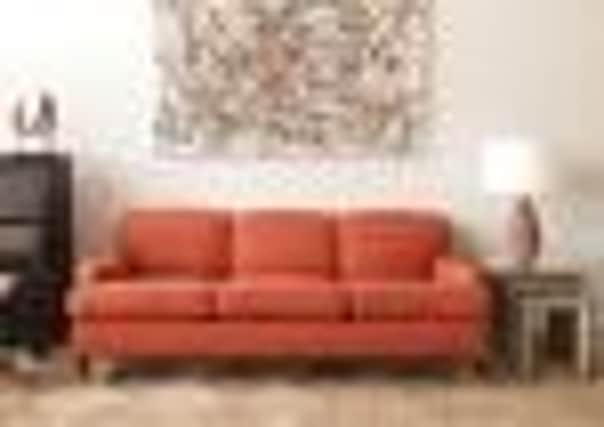Sitting targets


Your sofa is probably the most important piece of furniture in your sitting room as it will set the tone both in terms of the design feel of the space and the way you expect it to be used.
Your purchase decision should never be based on looks and “sale” price alone. So back away from the Special Weekend “once-in-a-lifetime” bargains, calm down and take a careful and controlled approach to decide the right sofa for you.
Advertisement
Hide AdAdvertisement
Hide AdThe use of the sofa has changed dramatically over the years as Andrew Mitchell, managing director of Artistic Upholstery (one of the UK’s most respected makers of bespoke furniture), explains: “Our products used to be purchased for occasional formal and lounge seating, but are now the universal centre of our client’s homes. We find people use them as a multi-functional piece for relaxing, reading, watching television, eating informal meals and even as the occasional overnight bed.” (www.artisticupholstery.co.uk).


One of the first things to consider is how you will actually be using it in the home. Will it be dominated by adults or pounced upon by youngsters? Something you sit upon properly or lounge upon casually. Also, how much space do you actually have for your sofa and how large (or small) are the people who are going to use it?
Before you start, make sure you know the actual space you have available for the sofa. It can be easy to get caught up in the decision-making process in a spacious showroom, only to find that your sofa is too large and imposing when you get it home.
A tape-measure is your best friend – have it with you at all times and take your available measurements with you. If in doubt, take the maximum dimensions of your chosen sofa and create a brown paper template, then lay this out in your room to check it will fit.
Advertisement
Hide AdAdvertisement
Hide AdAlso, consider external access, measure ceiling heights and door widths to avoid choosing a sofa that you cannot actually get into the house. Delivery men are experts, so you can always discuss this with your sofa retailer.


Jonathan Towler, of George Smith, in Harrogate (01423 563 160; www.georgesmith.co.uk) knows the importance of leading a client through a careful set of considerations. He tends to start with the decision over a loose cushion back or a fixed back as these immediately determine style. The former allows you to sink into a sofa, whereas fixed backs are slightly more formal.
Depth is an important consideration; a small/medium depth may not offer the right comfort if you are tall (and vice versa) so try various seat depths to find the one that suits you best.
Your cushion choice is vital, not just in terms of comfort, but in terms of everyday maintenance. There are choices for everyone out there, from relatively firm foam and fibre to the ultimate comfort of down. However, there can be a price to pay for ultimate indulgence and all-down cushions require no end of plumping.
Advertisement
Hide AdAdvertisement
Hide AdI always recommend a foam feather wrap for the seat cushion. It is a bit like wrapping a duvet around a foam inner; giving the advantage of the comfort of feather without the on-going maintenance as the foam gives greater structure to the cushion (although you still have to fluff occasionally).


Style is vital, with arm choice making the biggest impact. A full scroll has impact, but needs a large room to carry it off. In smaller rooms, a standard arm or low scroll will often work better.
The one thing that you can be sure of is that you really do get what you pay for and a good sofa with a well-made frame will literally last a lifetime (with the odd need for some re-upholstery and cushion changing over the years).
Andrew Mitchell advises some basic quality checks. He recommends lifting the sofa from the corner of one end – a good frame should not twist, creak or feel flimsy. Next, feel the frame behind the back cushions which, ideally, you want to be thick and padded – you should generally not be able to feel the frame.
Advertisement
Hide AdAdvertisement
Hide AdAndrew also suggests having a look under the seat cushion to see if the fabric is the same as the overall body of the sofa or an inexpensive lining. Finally, unzip one of the cushions and see if the fabric has been carefully over-locked to prevent fraying.


Jonathan Towler agrees, saying: “George Smith like clients to take their time, as it is a big investment. I always suggest clients try the sofa they like numerous times, as it will be with them for many years to come”.
So take the professionals’ advice, do some basic home-work, remain level-headed and weigh up the cost of a sofa over its actual lifetime.
* Jamie Hempsall, BIID, is an award-winning interior designer. Visit him at www.jamiehempsall.com or call 0800 032 1180.